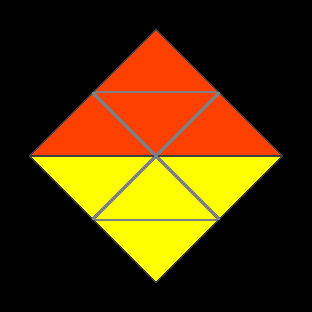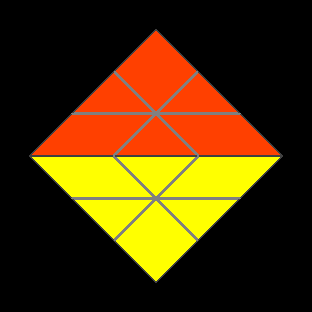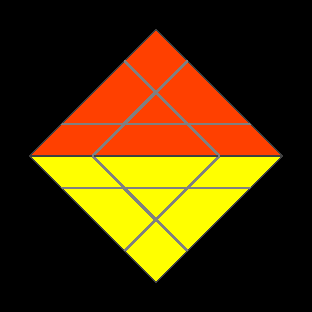The Cf puzzles are very simple to describe: they are just the very well-known 2x2x2 and 3x3x3 cube. There are, of course, much more efficient methods than those described here.
20080630
TPCP: Type Cf
20080629
TPCP: Type Te
These puzzles are tetrahedral with edge turns. Puzzles Te3 and Te4 in this series have extra moves if you remove the restriction that they must be tetrahedral, since in fact they can be considered as shape modifications of the 3x3x3 and 2x2x2 Rubik's Cube.
TPCP: Type Tv
These puzzles are tetrahedral with vertex turns. Because the tetrahedron is the unique regular polyhedron to have a face opposite a vertex, all face-turning tetrahedral puzzles can also be considered to be vertex-turning, and for simplicity's sake they will thus fall under the Tv classification.
Twisty Polyhedron Categorization Project
There are a lot of twisty puzzles out there, and they can be categorized in a multitude of ways. This project, the TPCP, is an attempt to categorize all of the most basic twisty puzzles into a list, ideally giving each one an identification code, an image, the gelatinbrain number or common name if applicable, a list of the types of pieces and their orbits, and a basic solution. I do not expect to complete all of it but I hope to get a good chunk of it done.
The most basic twisty puzzles, as I define them, satisfy the following characteristics:
- They are based around a regular polyhedron.
- There is exactly one type of axis around which turns can be made.
- All possible turn axes are represented, and they all have the same depth. Thus the puzzle is symmetrical and remains mathematically unchanged under a rotation.
- Each face of the solved puzzle has one unique solid color and the goal is to bring the puzzle into a state where each face has one solid color.
- After any turn, the puzzle is still in a regular-polyhedral form.
The foundation for the TPCP is very mathematical. Each puzzle belongs to one type, which is described by a capital letter denoting the polyhedron (T, C, O, D, and I for tetrahedron, cube, octahedron, dodecahedron, and icosahedron, respectively) and a lowercase letter denoting the type of axis (f, e, and v for face, edge, and vertex turns, respectively). Thus for example the 3x3x3 cube belongs to type Cf. Within the types, each puzzle gets a natural number, starting with puzzle 1 for the shallowest cut and increasing for deeper cuts. Puzzles with different-depth cuts which function in the same way are considered to be the same. Even trivial puzzles will be considered, except for puzzles with a cut depth of 0 where turns do not move any pieces and thus no scrambling at all is possible. In this case the 3x3x3 cube would be Cf1.
For standardization of images I have chosen to use an image size given by the downloaded Gelatinbrain applet: 312x312 pixels. Of course I have used the lossless .png format so the images should not take too much time to load. Images for puzzles which are not represented in the downloadable applet have been created by me.
Note that in this project if a set of pieces is described as "trivial" the pieces cannot be permuted relative to each other but do have an orientation.
Although it is not addressed in this project, it is possible to use this categorization system to create types for higher-order puzzles (which I call compound types), and I may investigate some of these series in the future. The type of, for example, a dodecahedral puzzle with two types of edge turn and one type of vertex turns would be Deev, and the Super-X would belong to type Cfv. Although the numbers within the types cannot be as unambiguous as in the TPCP puzzles, we can still assign each puzzle in a compound type a number, with the expectation that someone wishing to do research in this topic would look up a puzzle's number in an online list.
With that said, let's start to classify some of the types.









